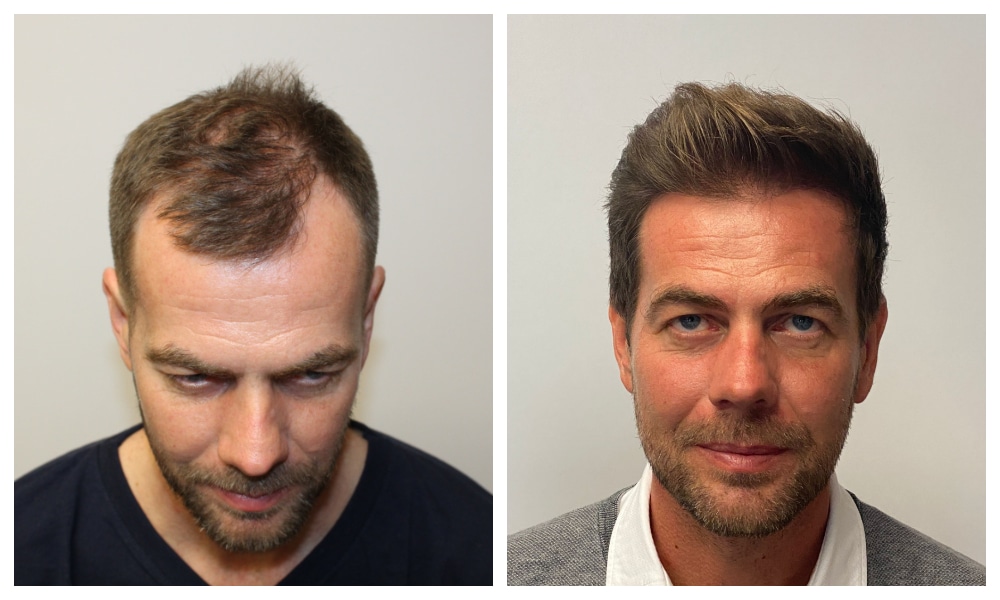Understanding the Hair Transplant Process: A Comprehensive Guide
Contents
- 1 Understanding the Hair Transplant Process: A Comprehensive Guide
- 2 Exploring the Benefits and Risks of Hair Transplantation
- 3 Comparative Analysis: Hair Transplants vs. Alternative Hair Restoration Methods
- 4 Post-Transplant Care: Ensuring Optimal Hair Growth Results
- 5 Debunking Common Myths About Hair Transplants
- 6 Conclusion
- 7 Frequently Asked Questions
The Hair transplant procedure involves several stages, each crucial for achieving natural-looking results. Initially, a consultation determines your suitability and outlines the expected Hair transplant cost. During the procedure, hair follicles are harvested from a donor site and transplanted to thinning areas. Post-surgery, Hair transplant recovery is essential to allow grafts to settle, with careful aftercare recommended to optimize results. It’s worth noting that individual experiences can vary, creating different outcomes.

Exploring the Benefits and Risks of Hair Transplantation
Hair transplantation can offer significant benefits, including improved self-esteem and a natural appearance, especially when considering the Hair transplant before and after results. However, it comes with risks, such as scarring and the potential for unnatural looking hairlines if performed inappropriately. Different Hair transplant techniques are available, each with unique advantages and challenges. Therefore, choosing the right hair transplant clinics becomes crucial to ensure optimal outcomes and minimize complications.
Comparative Analysis: Hair Transplants vs. Alternative Hair Restoration Methods
When considering hair restoration, the choice between traditional hair transplant techniques and alternative methods can be daunting. While hair transplant results often deliver permanence and natural-looking growth, alternatives like PRP therapy and topical solutions offer less invasive options with variable effectiveness. Each method has its pros and cons: hair transplants usually require more recovery time, yet the long-lasting outcomes appeal to many. Ultimately, the best choice depends on personal preference and hair loss severity.
Post-Transplant Care: Ensuring Optimal Hair Growth Results
After undergoing a hair transplant, proper care is crucial for achieving the best possible results. Initially, it’s important to follow your surgeon’s instructions meticulously. You may wonder about washing and styling your hair; typically, gentle cleansing is recommended. Hair transplant recovery can vary, but patience is key. Consider maintaining a nutritious diet and staying hydrated to aid follicle health. Despite challenges, many find that following these guidelines significantly enhances hair growth and density.
Key Care Tips
- Gentle Cleansing: Use mild shampoos to avoid irritation.
- Stay Hydrated: Drink plenty of water to nourish hair follicles.
- Avoid Heat Styling: Limit heat exposure to prevent damage.
Debunking Common Myths About Hair Transplants
Many people hold misconceptions about hair transplants, leading to unwarranted fears. For instance, some believe that the procedure is incredibly painful—however, most patients report minimal discomfort, largely due to effective anesthesia. Additionally, concerns about unnatural results persist, yet advancements in technique often yield impressively natural appearances. Furthermore, there’s a myth that hair transplants are only for men, but women can equally benefit. Therefore, understanding the realities can help individuals make informed decisions regarding hair transplant options.
Conclusion
Ultimately, a hair transplant can be a transformative solution for those yearning for fuller, more vibrant hair. Many individuals have found renewed confidence and happiness through this procedure, as it addresses the underlying causes of hair loss while providing natural-looking results. Nevertheless, it’s crucial to weigh the potential benefits against the risks and costs involved. Consulting with a qualified professional can help you make an informed decision tailored to your unique needs. Therefore, if you’ve been dreaming of reclaiming your hair and restoring your self-esteem, exploring a hair transplant might be a step worth considering.
Frequently Asked Questions
What is a hair transplant?
A hair transplant is a surgical procedure that involves relocating hair follicles from one part of the body, known as the donor site, to an area where hair is thinning or balding.
Who is an ideal candidate for a hair transplant?
Ideal candidates for hair transplants are individuals who have sufficient donor hair on the scalp, are in good health, and have realistic expectations about the results. Age and hair loss pattern are also considered.
How long does a hair transplant procedure take?
The duration of a hair transplant procedure can vary, but it typically takes between 4 to 8 hours, depending on the extent of the transplant and the technique used.
What is the recovery time after a hair transplant?
Most individuals can return to normal activities within a few days after the procedure. However, full recovery and the final results can take several months, as transplanted hair may initially fall out before new growth begins.
Are there any risks or side effects associated with hair transplants?
Like any surgical procedure, hair transplants carry some risks, including infection, scarring, and unnatural-looking hair growth. It’s essential to choose a qualified surgeon to minimise these risks.
